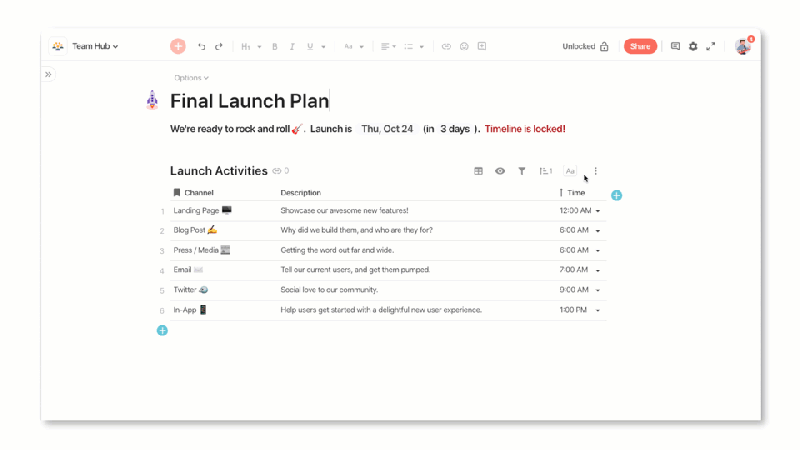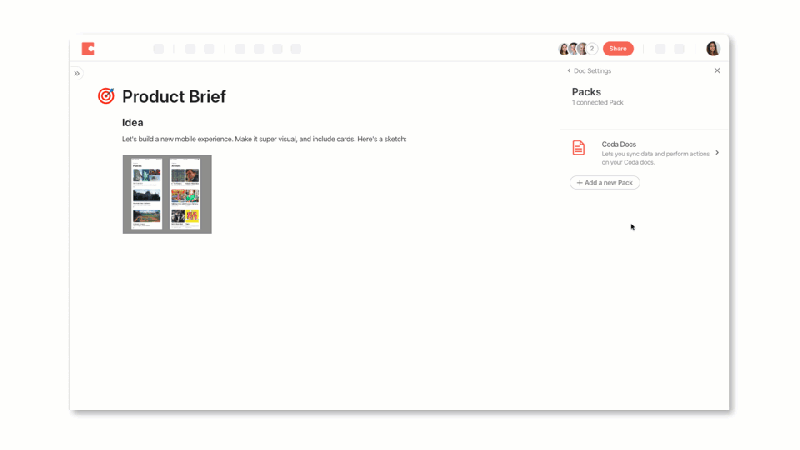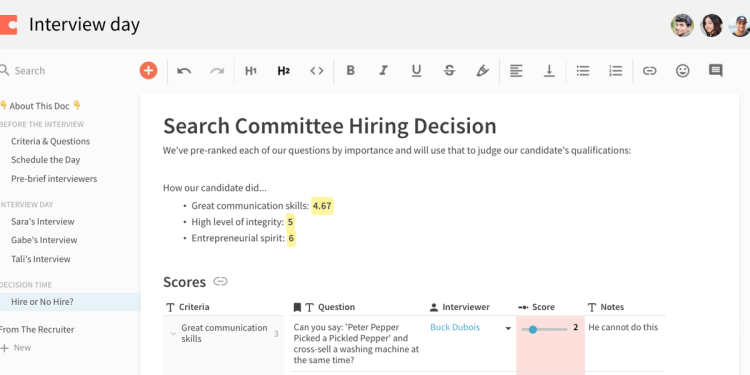Workplace collaboration platform Coda opened for business in February after a monthslong beta period, and it recently came to Android after launching first on the web and iOS. Now, after a year in which tens of thousands of users hailing from Square, The New York Times, Figma, and Zapier incorporated its tools into their workflows, the San Francisco company today unveiled a refresh of Coda that aims to streamline the suite while introducing new editing and orchestration tools.
The improved Coda features table filters and conditional formats that simplify common interactions, along with new drag-and-drop templates (like topic voting tables) that make block compositions easier to add to docs. It’s more readable, with centering for section headers and frame information. And performance is enhanced with respect to scrolling, calculations, and section-switching.
On the organizational side of the equation, new folder and workspace functionality lets admins grant users access to a set of files akin to a shared doc list. From a shared My Docs tab that doubles as a private sandbox, those users can tinker with documents before deploying them broadly.

Above: The new locking feature in Coda.
Docs and entire sections can be locked from editing in the revamped Coda, complementing a soon-to-launch permissions feature that’ll enable team managers to grant usage, editing, and sharing rights to groups or individual members selectively. And data can now be pulled from one doc into another with cross-docs, a tool that builds on Coda’s existing plugins functionality.
June 5th: The AI Audit in NYC
Join us next week in NYC to engage with top executive leaders, delving into strategies for auditing AI models to ensure fairness, optimal performance, and ethical compliance across diverse organizations. Secure your attendance for this exclusive invite-only event.

Above: Coda’s cross-doc tool.
“We’ve been listening closely to your feedback, gleaned over thousands of community posts, meet-ups, doc builds, support chats, and dinner conversations,” wrote CEO Shishir Mehrotra in a blog post, adding that Coda will remain free to use for document editing but that the company will charge individuals, teams, and enterprises for document creation. “[Coda 2.0] comprises new paid plans and a set of building blocks that address all the different galaxies of team collaboration.”
For the uninitiated, Coda is the brainchild of Microsoft and YouTube alumni Alex DeNeui and Mehrotra, who met at the Massachusetts Institute of Technology (MIT) as undergraduates. Distilled to its basics, it’s a kind of canvas that blends spreadsheets, presentations, apps, and documents in one. A one-tap presentation mode lets you view any doc in full screen (like PowerPoint), and a powerful programming language allows you to quickly embed tables, graphs, calendars, buttons, sliders, and other elements.
It’s been gaining functionality at a steady clip, with additions such as Coda Packs, which act as bridges between Coda and external tools like Gmail, Greenhouse, Intercom, Figma, Walmart Shopping, and GitHub. Packs can pull in Instagram images, YouTube videos, data about stocks and weather, and other media or perform tasks and push information out to apps like Slack and Twilio. And the above-mentioned Automations — a newer feature — enable time-saving contextual triggers that modify rows, tables, and more within (and outside of) Coda.
Competitors abound in an enterprise collaboration sector forecast to be worth $49.51 billion by 2021. Quickbase, Zapier, IFTTT, and Airtable are the undoubted forerunners, with the latter closing a $100 million funding round last year. But Coda has gained plenty of traction in just a few short years, with teams at Uber, Spotify, and New York media company Cheddar all tapping it for various organizational and automation tasks. Moreover, it has managed to secure funding from investors like Greylock, General Catalyst Partners, Khosla Ventures, NEA & KCPB, LinkedIn cofounder and former CEO (and Coda board member) Reid Hoffman, and other angels, for a total of $60 million in venture capital to date.


